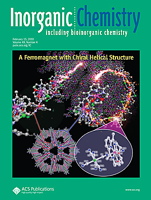"The Use of Imidazolium-2-dithiocarboxylates in the Formation of Gold(I) Complexes and Gold Nanoparticles"
Saira Naeem, Lionel Delaude, Andrew J. P. White, and James D. E. T. Wilton-Ely
 |
source: Inorganic Chemistry
year: 2010
volume: 49
first page: 1784
last page: 1793
doi: 10.1021/ic9021504
|

Abstract: The imidazolium-2-dithiocarboxylate ligands IPr · CS2, IMes · CS2, and IDip · CS2 react with [AuCl(PPh3)] to yield [(Ph3P)Au(S2C · IPr)]+, [(Ph3P)Au(S2C · IMes)]+, and [(Ph3P)Au(S2C · IDip)]+, respectively. The compounds [(L)Au(S2C · IMes)]+ are prepared from the reaction of IMes · CS2 with [AuCl(L)] (L = PMe3, PCy3, CNtBu). The carbene-containing precursor [(IDip)AuCl] reacts with IPr · CS2 and IMes · CS2 to afford the complexes [(IDip)Au(S2C · IPr)]+ and [(IDip)Au(S2C · IMes)]+ with two carbene units, one bound to the metal center and the other to the dithiocarboxylate unit. Treatment of the diphosphine-gold complex [(dppm)(AuCl)2] with 1 equiv of IMes · CS2 yields [(dppm)Au2(S2C · IMes)]2+, while the reaction of [L2(AuCl)2] (L2 = dppb, dppf) with 2 equiv of IMes · CS2 results in [(L2){Au(S2C · IMes)}2]2+. The homoleptic complexes [Au(S2C · IPr)2]2+, [Au(S2C · IMes)2]2+, and [Au(S2C · IDip)2]2+ are obtained from the reaction of [AuCl(tht)] with 2 equiv of the appropriate imidazolium-2-dithiocarboxylate ligand. The compounds [(Ph3P)Au(S2C · NHC)]+ (NHC = IMes, IDip) and [(IDip)Au(S2C · NHC)]+ (NHC = IPr, IMes) are characterized crystallographically. The IMes · CS2 ligand is also used to prepare functionalized gold nanoparticles with diameters of 11.5 (±1.2) and 2.6 (±0.3) nm.
[Full Text] [<< Previous Article] [Back to the List of Publications] [Next Article >>] l.delaude@ulg.ac.be